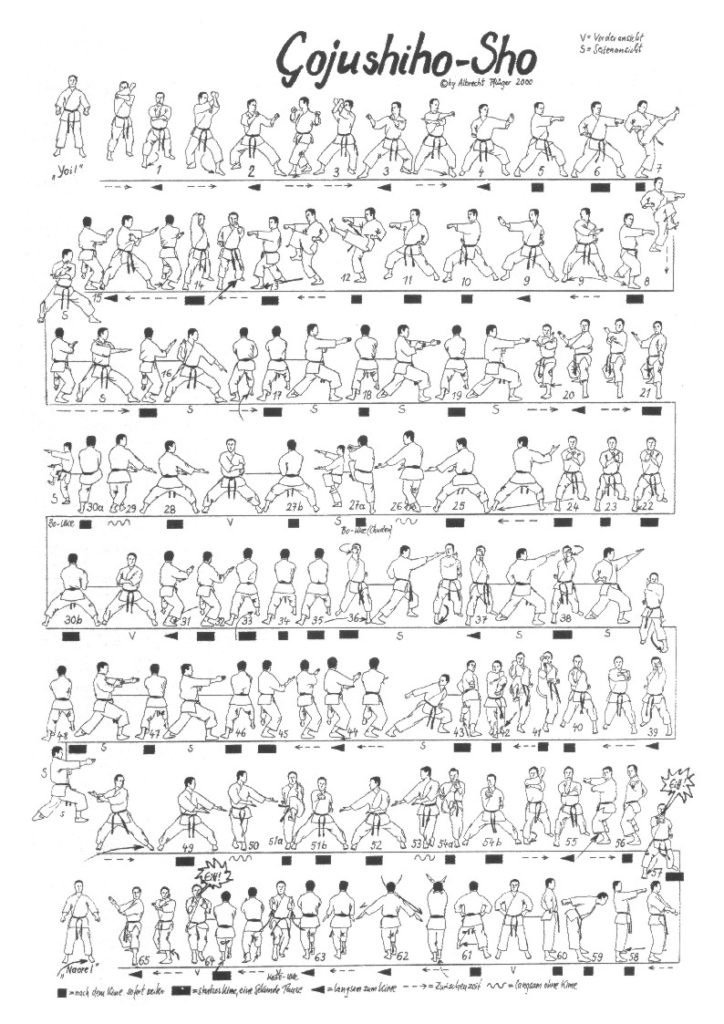Gojushiho, or Useishi as it is known in Okinawa, is another kata accredited to Sokon Matsumura. It is uncertain whether he brought this kata back with him from his travels to China, or whether the kata was his final masterpiece, an amalgamation of all of his skill and knowledge. Gojushiho is translated simply as "Fifty-Four Steps," making reference to the number of steps or movements in the original kata. Anko Itosu, a student of Matsumura, is alleged to be the one who created two versions of the kata, a Dai (big) version and a Sho (small) version. Both versions are highly advanced and quite long, with Sho at 65 counts and Daiat 67 counts (Best Karate #11 gives counts of 65 and 62, respectively). Being labeled as the smaller kata, one would expect Gojushiho Sho to have a smaller frame, fewer movements, and greater complexity than its counterpart Gojushiho Dai. To the contrary, Gojushiho Sho has a larger frame and is slightly less difficult to perform. In Best Karate #11, it is even listed as having more movements. It almost seems as if the names of these two kata should be reversed. It has been rumored that the names were switched decades ago for certain political considerations. In any event, according to the revised JKA count, Gojushiho Shopresently does, in fact, have fewer movements, and can officially be classified as the smaller version.
Unlike Itosu's other "second edition kata" (Bassai and Kanku), whereby an entirely new kata was developed using an earlier kata as a model, the two Gojushiho kata are most likely two different variations of the same kata. Both kata begin with mizu-nagare-uraken-kamae, an elegant posture demonstrating grace and resolve. Both kata rely heavily on the use of the fingers for jabbing strikes. Almost identical, these kata differ in their execution of the "trademark set." The trademark of Gojushiho Sho is be the ryuun (flowing clouds) set of movements consisting of ryuun-no-uke, followed by haishu-osae-uke/shuto-gedan-barai, and finishing with the triple shihon-tate-nukite. The main goal here is to perform ryuun-no-uke as smoothly and gracefully as possible, and to rotate the nukite techniques quickly and sharply. In Gojushiho Sho, spear-hand is the attack of choice although sword-hand techniques are also predominant.







